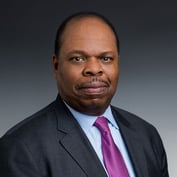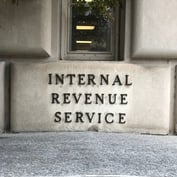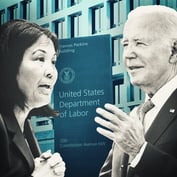Insurance companies that own or operate a savings & loan will face fresh oversight from the Federal Reserve Board, which is creating a process by which to examine those financial institutions that have significant banking assets.
At present, National Underwriter has learned that the Fed has identified at least 20 institutions whose holding companies and constituent thrifts it intends to oversee. These include American International Group, State Farm, Nationwide, Prudential, Northwestern Mutual, Massachusetts Mutual and W.R. Berkley. But this list of regulated companies is considered a “moving target” by federal regulators and is subject to change.
[See also: The Fed's Hit List]
The entire process is being overseen on behalf of the Fed by Frank Tarullo, a Fed governor who also serves as the Fed representative to the Financial Stability Oversight Council, the unit created by the Dodd-Frank Act to ensure stronger oversight of large financial institutions.
According to information provided by the Fed, as well as industry officials and their outside lawyers, the purpose of this new process is broad, designed to increase its own understanding of the insurance business and the differences between banking and insurance. But more importantly, the Fed also intends to oversee thrifts operated by financial firms at the holding company level, through authority granted it under the Dodd-Frank Act.
A third purpose, as noted by Federal Reserve Chairman Ben Bernanke in a recent speech in New York, is to increase federal oversight so that the oversight of large, complex financial services conglomerates – such as AIG in the run-up to the global financial crisis – does not somehow fall through the cracks.
Moving Targets
Some of the companies on the Fed’s list are already either shedding their thrift operations, or are planing to do so out of a concern of facing an additional layer of regulation through the Fed. For example, Prudential has announced plans through a securities filing to downgrade its thrift to a trust bank, thereby escaping Fed oversight. As a result, its thrift will be regulated by the Office of the Comptroller of the Currency (OCC).
According to Prudential spokesman Robert DeFillippo, Prudential is accomplishing this by divesting itself of all assets insured by the Federal Deposit Insurance Corporation. That will also allow Prudential to escape regulation under the Volcker rule, which limits proprietary trading by financial firms for their own account.
DeFillippo explained that its trading partners in the commercial mortgage business want Prudential to trade alongside them on these securities, which Prudential believes is appropriate. “We just don’t want to be considered a bank,” DeFillippo said. “We are an insurance company, and that’s what we want to remain.”
Mass Mutual is taking the same route as Prudential, “de-registering” as a thrift holding company, according to a securities filing that has been confirmed by company officials. The officials said they are awaiting word from the Fed that the downsizing of their thrift to a trust bank has been approved.
The official said that the actions of the company to downsize their savings bank operations stems from a July 21, 2011 memo from the Board of Governors, No. S.R. 11-12, outlining their plans to be the overseer of savings and loans owned by non-banks such as insurers which take deposits and conduct other banking activities. All insurers have been re-evaluating their business model as a result of this development, prompted by the Dodd-Frank Act. This act dissolved the Office of Thrift Supervision and shifted its responsibilities to the Office of the Comptroller of the Currency as charterer of savings and loans, and the Fed as overseer of thrift holding companies.
Separately, officials of W.R. Berkley Co. has revealed in a securities filing that it plans to divest its 80 percent interest in InsurBank, a thrift based in Farmington, Conn. The remaining 20 percent is owned by the Independent Insurance Agents and Brokers of America.
Robert A. Rusbuldt, IIABA president and CEO, acknowledged that because of Dodd-Frank, Berkley is considering divesting its interest in the thrift, and a “lot of decisions have to be made,” both by us and them. He said there is no immediate timetable for a decision as to what will happen with the thrift, which will be regulated going forward both by the OCC and the Fed. “[The Dodd-Frank Act] means that thrifts will be regulated in a different way than before,” and that Berkley believes that operating a thrift under DFA “is very onerous.”
Rusbuldt said that “banks are regulated in a different way than insurers,” and not only Berkley but other companies with thrifts are considering their options because of the different rules under Dodd-Frank.”
At the same time, Rusbuldt said that “InsurBank is profitable, it is growing, and it has a lot of independent agents as customers.” According to SNL, InsureBank at the end of 2001 had total assets of $170 million, total deposits of $130 million, and year-to-year growth rates of 10 percent for assets and 11.53 percent for deposits.
Meanwhile, Thrivent Financial for Lutherans, a life insurance company, Minneapolis, Minn., has filed an application to turn its thrift into a credit union in order to escape regulation by the Fed.
Other insurers that are winding down bank-type operations are MetLife, which is selling its bank to GE Capital; Allstate, which is winding down its bank; Pacific Mutual Holding Company, which is selling its College Savings Bank unit; and Western & Southern Mutual Holding Company, which is winding down its Fort Washington Savings Co.
Next page: So Much for SIFI
So Much for SIFI
Officials of the Boston Federal Reserve Bank confirmed what the Fed is doing, and said the Fed “became responsible for 26 savings and loan holding companies that were primarily engaged in insurance operations” through the Dodd-Frank Act.
Dodd-Frank transferred all of the powers of the Office of Thrift Supervision to other federal agencies, and as a result, the Fed’s authority is now “very broad,” according to the former top counsel of a federal regulatory agency who is now in private practice.
The stronger oversight of the insurance industry by federal regulators also includes plans to designate certain institutions systemically significant (SIFI). Only a handful of insurers are likely to be so designated, however. Far more insurers will come under stronger federal oversight oversight through the regulation of their thrifts by the Fed and the OCC, as successor to the OTS.
The former federal regulatory lawyer now in private practice, said the Fed, as overseer of the thrift at the holding company level, can examine an insurer, set minimum capital and liquidity requirements and restrict or prohibition transactions between the holding company and the savings association subsidiary.
The Fed can also establish require internal controls, mandate policies and procedures that must be followed, and can take enforcement actions against officers and directors of the holding company. The Office of the Comptroller of Currency has similar broad authority, but only over federal savings association entities and their direct subsidiaries.
Several of the companies involved, from the largest ones to the smallest ones, have confirmed that the Fed has already talked to them, and has designated a Fed Bank to examine them.
Another Washington lawyer familiar with the thrift regulation issue acknowledged that a number of institutions are divesting their thrift and bank business, or downgrading them to trust banks, underscoring industry concern about having the Fed as regulator.
The lawyer, who asked not to be identified, said that most of the remaining institutions are comfortable with the Fed as regulator of its thrifts. He classified the Fed as a “diligent regulator,” and that its oversight will be limited to the holding company and not the insurance operating level.
This lawyer noted that insurers are as concerned about the Volcker rule’s impact on them as they are about SIFI and regulation of their thrifts, citing the comments by Prudential as reflective of the views of many insurers about the potential impact the Volcker rule could have on them. He noted that insurers lobbied “long and hard” to exempt their trading activities, which are designed to hedge against interest rate risk on long-term assets, from the Volcker rule during negotiations over the Dodd-Frank Act.
The Fed board in Washington is engaging all the Fed banks outside of the New York Fed in the enterprise, with the Chicago Fed’s economics unit establishing the benchmarks through which Fed examiners will examine the books of the targeted insurers.
The Boston and Chicago Fed banks are playing a key role, assuming responsibility for overseeing many insurers in the New York metropolitan area as well as those based in New England.
“We want to develop a thoughtful and effective supervisory approach for savings and loan holding companies that are primarily engaged in insurance operations,” said Judy Quenzel, a vice president and head of insurance supervision at the Boston Fed.
“Certainly there are similarities, but also important differences between the banking and insurance industries,” Quenzel said. “It is incumbent upon us to understand the business strategies and risk profiles of these firms and reflect that awareness in our supervisory approach.”
Meanwhile, Anna Paulson, vice president & director of Financial Research at the Chicago Fed said that the Fed’s goal was to better understand the role of the insurance industry in the U.S. financial system. “The insurance industry is a large and important part of the financial sector, and we anticipate an on-going need to understand the industry’s role in the financial system,” she said.
Paulson confirmed that the Fed’s insurance initiative personnel have begun meeting with members of the insurance industry, other financial sector representatives and insurance regulators. “The quality of our analysis is significantly enhanced through these discussions, so we are interested in extending and deepening our range of contacts,” Paulson said.
However, it is clear the Fed views insurance industry events through a banking lens.
Paulson, who has a Ph.D in economics from the University of Chicago and has been with the Fed since November 2001, said on March 2 at the New York University Stern Insurance Conference in her presentation,“The Risk of Insurance Companies,” that runs on insurance companies do happen. She cited the 1999 case of General American, when “7-day puts” were called in to the tune of over $6 billion; contract holders only needed seven days to call in their money, which they did when the company was downgraded by Moody’s.
“The reason for including the General American example was simply to demonstrate that runs on insurance companies can happen, and have happened, in some rare cases,” Paulson later noted. “It should not be taken as a commentary on the failure or success of insurance regulation.”
Paulson said in an emailed answer to reporter queries that the Fed was interested ultimately in both the impact of the insurance solvency situation on the markets and on policyholders.
“We would like to better understand how the financial condition of the insurance sector impacts both financial markets and real economic activity,” she said. Besides the obvious interest in how financial markets affect insurance companies (e.g., through interest rates), the Chicago Fed is clearly looking at the industry’s place in society as a provider of financial protection products.
“One way that the insurance sector might impact real economic activity is through the cost and availability of insurance products. For example, the pace of new business formation might be stronger when property and casualty insurers have experienced low losses and are insurance products are cheaper and more available,” Paulson said.
Next page: Bernanke vs. the Shadow Bankers








 May 02, 2012 at 05:34 AM
May 02, 2012 at 05:34 AM










